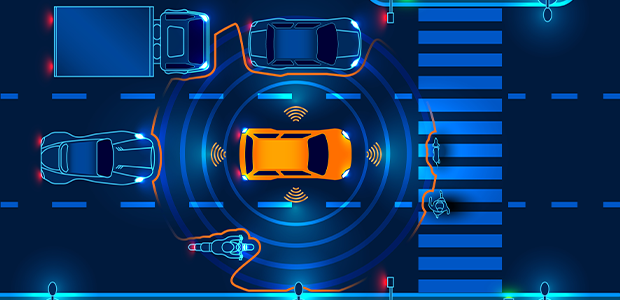
Wayve Launches PRISM-1 for Enhanced Autonomous Driving Simulation
Wayve, a startup pioneering Embodied AI for self-driving technologies, has introduced PRISM-1, an innovative 4D reconstruction model that enhances the testing and training of its Advanced Driver Assistance Systems (ADAS) and autonomous driving technology.
PRISM-1 represents a significant advancement in 4D reconstruction, enabling scalable, realistic resimulations of complex driving scenes with minimal engineering or labelling effort.
Initially showcased in December 2023 via its Ghost Gym neural simulator, Wayve has utilised novel view synthesis to create precise 4D scene reconstructions (3D in space plus time) using only camera inputs. This method promises to revolutionise autonomous driving simulation by accurately and efficiently depicting the dynamics of complex and unstructured real-world environments. PRISM-1 powers the next generation of Ghost Gym simulations. Unlike traditional methods that rely on LiDAR and 3D bounding boxes, PRISM-1 employs novel view synthesis techniques to accurately portray moving elements such as pedestrians, cyclists, vehicles, and traffic lights, including intricate details like clothing patterns, brake lights, and windshield wipers.
Realism is crucial for developing effective training simulators and evaluating driving technologies. Traditional simulation technologies treat vehicles as rigid entities, failing to capture critical dynamic behaviours like indicator lights or sudden braking. PRISM-1, however, uses a flexible framework that excels at identifying and tracking changes in scene elements' appearance over time. It can precisely resimulate complex dynamic scenarios, distinguishing between static and dynamic elements in a self-supervised manner, thus avoiding the need for explicit labels, scene graphs, and bounding boxes to define a busy street's configuration. This approach maintains efficiency even as scene complexity increases, ensuring that more complex scenarios do not require additional engineering effort, making PRISM-1 a scalable and efficient solution for simulating complex urban environments.
Jamie Shotton, Chief Scientist at Wayve: “PRISM-1 bridges the gap between the real world and our simulator. By enhancing our simulation platform with accurate dynamic representations, Wayve can extensively test, validate and fine-tune our AI models at scale.
“We are building Embodied AI technology that generalises and scales. To achieve this, we continue to advance our end-to-end AI capabilities, not only in our driving models but also through enabling technologies like PRISM-1. We are also excited to publicly release our WayveScenes101 dataset, developed in conjunction with PRISM-1, to foster more innovation and research in novel view synthesis for driving.”
Accompanying PRISM-1’s launch, Wayve is also releasing its WayveScenes101 Benchmark, a dataset comprising 101 diverse driving scenarios from the UK and US, including urban, suburban, and highway scenes under various weather and lighting conditions. Wayve aims for this dataset to support the AI research community in advancing novel view synthesis models and the development of more robust and accurate scene representation models for driving.

